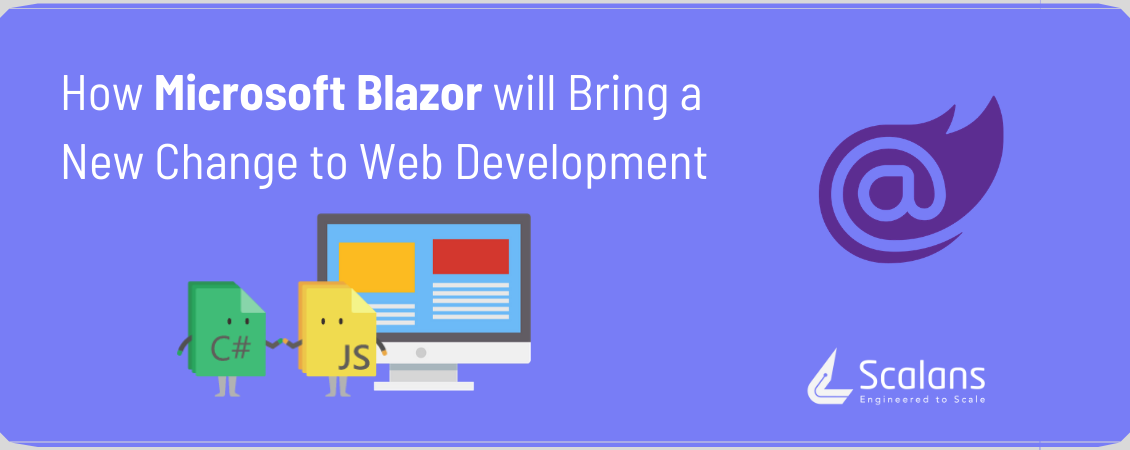
How Microsoft Blazor will Bring a New Change to Web Development
The field of web application development is constantly evolving with new programming languages and tools gaining acceptance among developers; the latest one being Microsoft’s Blazor.
A free and open-source HTML framework, Blazor brings w ith it an innovation – it builds interactive web UIs for client-side using C# and .NET, instead of the traditional JavaScript. Microsoft have also announced a new experimental project to enable native mobile app development with Blazor.
Main Features of Blazor
1.Direct running of .NET code in the browser
This is the main highlight of Blazor. For rendering the client-side code to the browser, you don’t need JavaScript; it is done by C#.
2. Reusable UI components
Both the server and the client-sides share the same .NET app logic, i.e; the client-side code can be reused for the server-side without the aid of any plugins or code transpilation.
3. JavaScript Interoperability (JS Interop)
UI components can interoperate with JavaScript to allow apps to access third-party JavaScript libraries and browser APIs.
4. SPA Features
It has many features of Single-page applications like dependency injection, server-side rendering, routing, forms and validation, etc.
5. Cross-Browser Compatibility
Blazor is supported by Windows, Linux and macOS and also runs on mobile browsers and container platforms like Docker. So far, two Blazor hosting models have been released.
Let’s take a look.
Blazor WebAssembly
A single-page app framework, Blazor WebAssembly utilizes open web standards to develop client-side .NET web apps. The .NET code is run directly on the browser using WebAssembly or Wasm, a binary-code format that executes code at near-native speeds than JavaScript.
The code runs in a JavaScript sandboxed environment, thus protected from any malicious attacks on the client machine. This model offers rapid response times and faster downloads.
Blazor Server
In this model, Blazor apps are housed on an ASP.NET Core server in the form of Razor components, and the client UI updates, event handling and JavaScript interop calls are done via a SignalR connection.
SignalR is an event-driven library that adds real-time web functionality to apps. This enables instantaneous pushing of server-side contents to client-side. Thus, Blazor Server apps have smaller download sizes and faster loading times.
Three more editions – Blazor Hybrid, Blazor PWA and Blazor Native are in the pipeline.
Conclusion
With a growing community and a smooth learning curve, Blazor is slated to bring new paradigms to web development, thereby enhancing both developer efficiency and user experience. As a leading .NET development company, we are committed to embrace Blazor to build robust web apps for businesses.



